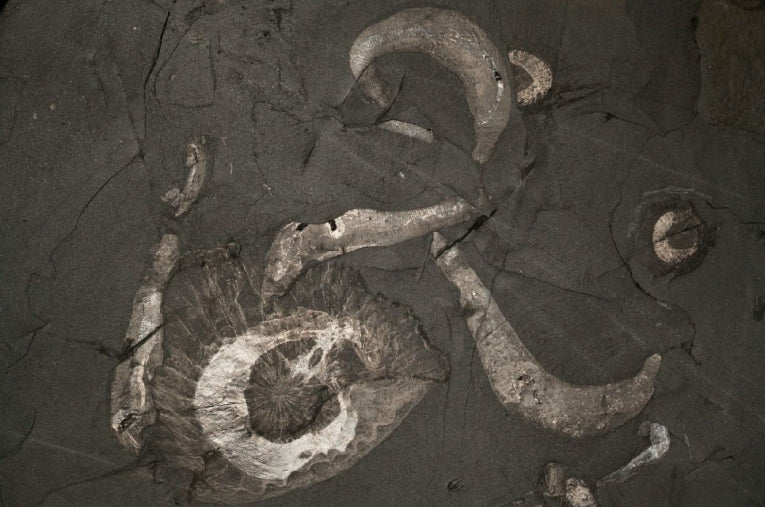Soft bodied animals aren't supposed to fossilise. There is no trace of them in most fossil beds. There was though, a time and a place when it did happen, giving us a window into an unknown world.
The Burgess Shales are one major example of the Cambrian carbonaceous compressions of small soft bodies in mud. Since their discovery by Walcott in 1909, Chinese shales at Chengjiang and Yu'anshan and some in the Canadian Rockies in the Stephen formation and the Marjum Formation in Utah have been added to these valuable sources of such early fossils.
The reason they didn't decay is that microbial activity at that time was inhibited by oxidant deprivation. Sulfate concentrations were low in the oceanic sediments, causing the animals and plants to be sealed up in carbonate cement in these fossil beds. The unusual highly-alkaline sea water in the early Palaeozoic also helped to quickly seal up the deposits.

These four "tulip animals" show up well in this fossil; © Royal Ontario Museum
A large international team, headed by Robert R. Gaines wrote this paper in the journal, PNAS. Their work has shed light on a remarkable event in the history of life as we know it and as we do not know it.
The remarkable nature of these often unidentifiable animals is down to their early Cambrian explosion of evolution. Many of these creatures were never seen again, as better adapted forms competed with them over millions of years.
Since the Cambrian flowering of these phyla, fossils of soft-bodied animals have never been formed. Instead we have to figure out which animals were our ancestors and which could have been but fortunately, were not!










